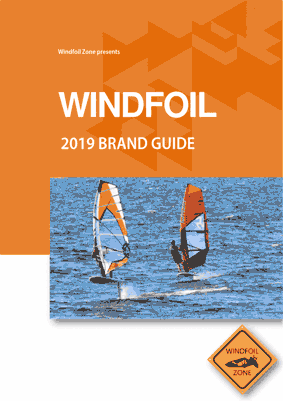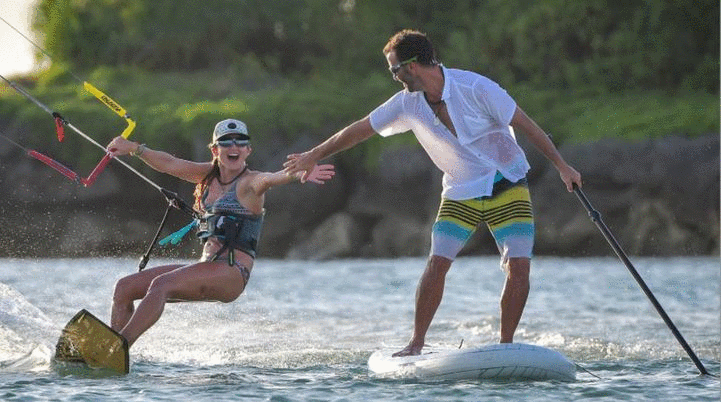How To Foil by Balz Müller - "the art of balancing in the air"
- Romain
- Aug 11, 2019
- 5 min read
Balz Müller recently published a video dedicated to windfoil newbies (filmed by Kumamovie7), but it ended up catching the eye of experienced foilers too.
The foilstyle master gives us a 20-minute crash course in foiling. The video itself is barely edited and is somewhat unstructured, however it’s one of the best windfoil tutorials ever published so far!
It is full of guidance, advice and helpful suggestions about how you can take your foiling to the next level!
Don’t have time to watch the whole video? You'll find below the video the key points and our own comments.
Don’t be scared, you don’t need to be!
Always hold on to the boom so you keep a safe distance from your foil when you fall.
Most accidents happen when you are water starting, as it is very easy to kick the sharp foil when you are swimming under the board. Stay far from your board or even better, use the uphaul line to start.
We however recommend to always wear a helmet and an impact vest. Check out our review of impact vests.

Balz is always wearing a helmet when foiling
Foiling is not like learning a completely new sport, it’s the same as windsurfing.
Of course you will get different feelings and sensations on your board compared to regular windsurfing, but ultimately you are still windsurfing.
The biggest difference between windsurfing and foiling is that when you learn windsurfing, you get told that you need to plane before getting in the footstraps.
The problem is that if we do the same on the windfoil board, the board gets out of control and is very unstable up until you get your feet in the straps.
Balz recommends putting your feet straight into the footstraps, even before planing. Put at least the front foot in the start, followed by the back foot. Now it will be much easier to control the board on to plane. Putting both feet in the footstraps may be difficult if you have a large foil board with outboard footstraps.
Avoid breaking your board during your first foiling sessions!
Read our review: 5 Board Nose Protections For Your Next Windsurf Foiling Session!
Pump it up!
When you are in your straps, you can start pumping and the board will start to lift. Make sure you have your body weight right above the board when it starts lifting, so you keep the board stable. When you are up in the air it’s just a matter of time before you find the right position which is both comfortable and balanced.

Mast track position
- Balz recommends putting the mast foot as far back as possible in the mast track. His thoughts are that it makes the board lift more easily as you don’t need to put so much pressure on the back food to make it to lift.
While I agree with his recommendation, I actually always advise the opposite!
I believe that most beginners are afraid of that sudden lift that the board gets.
I therefore recommend putting the mast track at the front of the board and test the lift. The board will then lift a little bit and most likely it will slowly come down to the water again. But at least you get used to the lift of the board without overfoiling so often.
Then, when you have experienced your first flights and are getting comfortable with it, you can try moving the mast foot backward, get more lift, and train on sustained flights.

Footstrap position and foil pumping - Another good tip from Balz is to check how your footstraps and the front wing are positioned when you are on the beach. The front wing should be positioned right between your feet when you stand on your board. This is the ideal position to be able to push on your feet and pump the foil.
Foil pumping is the movements you do with your legs, shifting weight from your back leg to your front leg. This is the same principle surf-foilers like Kay Lenny use to generate lift and surf the swell. But in windfoiling, you will need to coordinate the pumping of your sail at the same time, making a circular movement with your mast.
This technique demands good coordination and is something you‘ll need to train on. A good pumping technique is a must if you want to be able to fly in very light wind.
As soon as you get up on the foil, you will get the apparent wind kicking off and it will be easy to keep flying, but before that you will have to work hard to lift the board above the sea water.
The jibe

Foiling jibe
Next step is the jibe. You will soon realize that jibing on the foil is quite different from normal windsurfing jibe. But it’s not necessarily more difficult, it’s just a new technique to acquire. Here we got some more valuable tips from Balz Müller:
- Start with a non-flying jibe: Land on the water in the middle of the jibe as you would do with a normal windsurf board. However, Balz recommends to position your new front foot right in the front strap when you change feet position, and not in front of the footstrap as you would normally do on a windsurf board. This will help you to keep the board stable and get ready to fly again as soon as possible. Moving your feet from strap to strap will make everything easier as you will keep control of the board.
When you master the foiling jibe, try the foiling duck jibe, which is actually easier to do on a foil than on a regular windsurf board!

Foiling duck-jibe
How to carry your windsurf foil board?
Balz show us 2 ways to do so:
- On your hip if the board is narrow
- On your head if you have a large board
2 common ways to carry your foil board
The future of foil boards
- Balz is also introducing a very interesting subject: what will be the future foil boards?
Today there are quite a lot of brands producing dedicated foil boards with a reinforced fin box. The problem is that most people already have a board and would prefer to use it instead of buying a new one. The solution? There are two:
Shift your fin box into a reinforced one. This is an advanced process, and most of us would need help from a professional shaper. Read our interview with Andrea Pagan of Seatex Boards.
Give a try to the new foils with a powerbox head and load plates (Neilpryde Glide in particular). However, these foils are probably about to be discontinued due to a high risk of board breakage. (JP Australia has even officially warned that they do not offer any warranty if their board has been used with a powerbox foil).
What will be the future of foiling boards then? Most likely there will be more and more convertible boards, which would enable the rider to do both regular windsurfing in high winds and foiling in light wind. Foiling is still young and we can expect that foiling boards will evolve and develop further in the coming years.

Conclusion: Here are the key take-aways from the interview:
- Don’t be afraid
- Take time to adjust your gear to find its perfect position
- Put your feet directly into the foot straps
- Carbon foils are recommended if you want something performant, but aluminium foils are not bad at all, and good to start with.
As Balz jokingly says at the end, wind foiling is “the art of balancing in the air!”. Be sure to share with us if you’ve given some of his advice a try, in the meantime – have fun flying!
If you want to learn more, please read our tutorials posts, or watch the video tutorials.
Credit: All pictures and films are from Kumamovie7












Comments